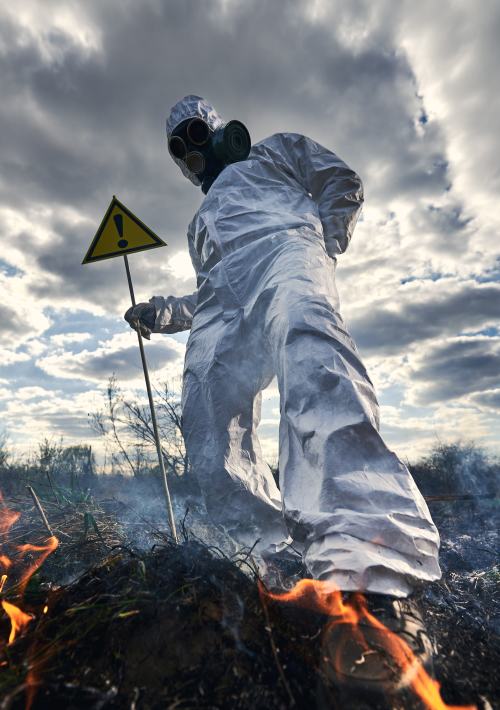
2021s Most Cited OSHA Safety Violations
Every year, OSHA issues citations for violations of safety. They also keep track of the most common infractions. This is done by OSHA to raise awareness of the problems.
Fall protection, for example, is mentioned twice on the Top Safety Violations list, proving there’s still much confusion around the rules with fall arrest regulations.
The top ten OSHA cited safety violations for 2021 are as follows:
- Machine Guarding: 1,113 infractions
- Powered Industrial Trucks: 1,420 infractions
- Personal Protective and Lifesaving Equipment: 1,452 infractions
- Fall Protection – Training Requirements: 1,666 infractions
- Lockout/Tagout: 1,698 infractions
- Hazard Communication: 1,947 infractions
- Scaffolding: 1,948 infractions
- Ladders: 2,026 infractions
- Respiratory Protection: 2,527 infractions
- Fall Protection – General Requirements: 5,295 infractions
#1 Fall Protection – General Requirements
Let’s start with the worst category first, the Fall Arrest – General Requirements category. This category is strictly equipment citations, violations of training and scaffolding fall into a separate category. The Fall Protection – General Requirements category refers to gear and equipment required when working with heights.
Infractions in this category typically involve subpar tie-off points, subpar harnesses, or no fall arrest at all. The number of citations issued this year indicates that many businesses are still unsure of the rules governing fall protection and “working on heights.”
Infractions involving fall arrest totaled 5,295 in 2021. Fortunately, that figure is lower than in 2020 (5,424). However, there is still much room for improvement.
#2 Respiratory Protection
Respiratory Protection was the second-most frequently cited offence in 2021. In 2021, OSHA recorded 2,527 respiratory infractions.
If an employee is not given the necessary respiratory PPE, then an employer can be cited for respiratory protection violations. The category covers gear from dust masks all the way up to positive air respirators.
#3 Ladders
Ladders teeter between being helpful and precarious. Hense why there are numerous regulations governing their use. In 2021, OSHA found 2,026 improper ladder use violations. The most frequent infractions include “Using a ladder only for its intended purpose” and “Not using the top step of a stepladder as a step.” People frequently violate regulations when using stepladders because a four-foot drop seems harmless enough. However, contrary to popular belief, stepladders have been involved in numerous life afflicting accidents.
There’s not much we can do to make working on a ladder safer, that’s why scaffolds are preferred for prolonged work. However, ladder safety courses can make someone think twice before reaching too far and using the last step.
#4 Scaffolding
The many OSHA scaffolding regulations aim to reduce the risks associated with scaffolding. Although OSHA has a reputation for being strict, they have also repeatedly witnessed how things can go wrong—especially with scaffolding.
OSHA recorded nearly 2000 scaffold infractions in 2021. Many of these violations were committed by businesses using custom scaffolds and unpredictable designs.
5# Hazard Communication

The fifth most cited is hazard communication. In 2021, OSHA discovered 1,947 hazard communication violations. The hazard communication category refers to violations like the absence of safety data sheets (MSDS) or inadequate signage. In other words, the hazard communication category covers everything involved with relaying hazardous information to the employee. If a company communicates all its hazards properly, then they need not worry.
This category is becoming all the more important with modern manufacturing practices. We are using more concentrated and volatile materials than ever in history, necessitating all the more training and awareness.
6# Lockout/Tagout
2021 saw many lockout citations. Lockouts are one of the few ways workers can guarantee their own safety. It is a procedure in which an employee or maintenance specialist is given their own lock in which they can lock a machine from activity during the task.
There are many new lockout regulations and naturally, citations to force the uncompliant. Yet, most businesses adopted lockout procedures quickly and professionally. There are now countless livelihoods saved thanks to lockout protocols. They are a safe and accident proof practice.
7# Fall Protection Training Requirements
Training requirements are the second category of fall protection violations to make the list. Fall arrest training is not new, so companies should be well aware of the required training. However, many in-class fall arrest courses were cancelled during the pandemic. Even though fall arrest training can be completed online, the pandemic may have contributed to the lack of training this year.
#8 Personal Protective and Lifesaving Equipment
Both employers and employees find it demanding to stay on top of personal protective equipment. But the vast majority of businesses are satisfying all the requirements 365 days a year. Despite many businesses’ success, OSHA cited 1,452 violations last year. OSHA specifically mentions eye and face gear as primary problems.
#9 Powered Industrial Trucks
Infractions involving powered industrial trucks totaled 1,420 in 2021. Forklifts and a variety of other towing equipment all fall into the powered industrial truck category. Power trucks are subject to a number of regulations intended to reduce the high number of accidents they cause. After using a forklift for a while, people frequently grow accustomed to it and become complacent. Although these laws do little for complacency, the training they incentivise is at least a reminder of things that can go wrong. Not to mention for trainees, the required training could be crucial.
10# Machine Guarding
Machine guarding violations, with 1,113 recorded offenses, just barely snuck into tenth place. The machine guarding category involves machine hazard controls. This vast category includes numerous varieties of saws, conveyor belts, and other uncommon manufacturing equipment guarding.
Many one-of-a-kind machines require creative guards and controls, some of which did not meet OSHA’s standards in 2021. Despite the cited, most companies comply and see the standards as a good thing to penalize the uncommon offenders. There’s no telling how many arms and fingers guarding legislation has helped save.






























